Investment Insights: Adapting to Changing Customer and Vendor Dynamics in Supply Chain Management Software
Investment Insights: Adapting to Changing Customer and Vendor Dynamics in Supply Chain Management Software
Supply chains are becoming increasingly complex, exacerbated by Covid-related disruptions, driving demand for advanced Supply Chain Management (SCM) software solutions that can provide end-to-end visibility across a business’s operations. These emerging needs stem from a desire for greater efficiencies across supply chains, including better communications across stakeholders and better data tracking to inform decisions—all of which are strong drivers of continued growth in spending on SCM solutions.
Vendors in the space, from point solutions to customizable platforms, are continuing to evolve with the goal of better serving specific customer segments, geographies, verticals, and supply chain functions through M&A and organic product development—all of which are viable paths for continued growth and market expansion.
Stax has extensive experience in the SCM market, with coverage across sub-segments of the market. In this article, we’ll cover various evolving customer dynamics and the vendor landscape while providing investment considerations that investors should look out for.
Evolving Customer Dynamics
Preference for Comprehensive Set of Functions, But Not Necessarily from a Single Platform:
Manufacturers and brands view an end-to-end SCM software solution as a platform providing a full range of functions across Planning (e.g., demand planning, inventory planning, S&OP planning), Execution (e.g., Warehouse Management software (WMS), Management Execution System (MES), Transportation Management System (TMS)), and Analytics (e.g., supplier/distributor inventory level monitoring, what-if scenario modeling). The analytics offering typically acts as a “control tower,” sitting on top of planning and execution functions and monitoring potential upstream and downstream supply chain disruptions.
There are certain software vendors that come close to offering a comprehensive SCM suite (e.g., Blue Yonder, Oracle, SAP). That said, though the set of capabilities mentioned prior are considered to make up an “ideal end-to-end SCM platform,” recent customer feedback indicates that using separate vendors for separate SCM functions is not only common, but also does not appear to be any less preferential than consuming all functions from the same vendor.
In fact, given the choice between a best of breed point solution vs. a module within a broader suite that may have slightly less robust capabilities, customers will often choose the point solution option, regardless of added implementation, integration, and vendor management complexity.
This bodes well for specialized SCM vendors, who are well-positioned to capitalize on this change in buyer preferences. Still, they will have to continue to build out feature depth within specific SCM functions to deliver value and capability granularity that exceeds what is offered by more all-encompassing SCM platform vendors. Further, this suggests that platform vendors offering a broader suite of SCM modules will have to continue to build out capability depth to rival point solutions, while also ensuring integrations between modules are strong, and modules themselves are highly configurable (aspects that vary drastically across platform vendors).
Supply chains are becoming increasingly complex, exacerbated by Covid-related disruptions, driving demand for advanced Supply Chain Management (SCM) software solutions that can provide end-to-end visibility across a business’s operations. These emerging needs stem from a desire for greater efficiencies across supply chains, including better communications across stakeholders and better data tracking to inform decisions—all of which are strong drivers of continued growth in spending on SCM solutions.
Vendors in the space, from point solutions to customizable platforms, are continuing to evolve with the goal of better serving specific customer segments, geographies, verticals, and supply chain functions through M&A and organic product development—all of which are viable paths for continued growth and market expansion.
Stax has extensive experience in the SCM market, with coverage across sub-segments of the market. In this article, we’ll cover various evolving customer dynamics and the vendor landscape while providing investment considerations that investors should look out for.
Evolving Customer Dynamics
Preference for Comprehensive Set of Functions, But Not Necessarily from a Single Platform:
Manufacturers and brands view an end-to-end SCM software solution as a platform providing a full range of functions across Planning (e.g., demand planning, inventory planning, S&OP planning), Execution (e.g., Warehouse Management software (WMS), Management Execution System (MES), Transportation Management System (TMS)), and Analytics (e.g., supplier/distributor inventory level monitoring, what-if scenario modeling). The analytics offering typically acts as a “control tower,” sitting on top of planning and execution functions and monitoring potential upstream and downstream supply chain disruptions.
There are certain software vendors that come close to offering a comprehensive SCM suite (e.g., Blue Yonder, Oracle, SAP). That said, though the set of capabilities mentioned prior are considered to make up an “ideal end-to-end SCM platform,” recent customer feedback indicates that using separate vendors for separate SCM functions is not only common, but also does not appear to be any less preferential than consuming all functions from the same vendor.
In fact, given the choice between a best of breed point solution vs. a module within a broader suite that may have slightly less robust capabilities, customers will often choose the point solution option, regardless of added implementation, integration, and vendor management complexity.
This bodes well for specialized SCM vendors, who are well-positioned to capitalize on this change in buyer preferences. Still, they will have to continue to build out feature depth within specific SCM functions to deliver value and capability granularity that exceeds what is offered by more all-encompassing SCM platform vendors. Further, this suggests that platform vendors offering a broader suite of SCM modules will have to continue to build out capability depth to rival point solutions, while also ensuring integrations between modules are strong, and modules themselves are highly configurable (aspects that vary drastically across platform vendors).
Preferences for Platform vs. Point Solution Determined by Organizational Maturity:
In general, buyers are increasingly requiring comprehensive SCM functionality, without a clear-cut preference for purchasing from a single platform versus a set of specialized vendors. That said, maturity of an organization can be an indicator of buying preferences, impacting buyers’ willingness to invest in advanced SCM tools.
More mature organizations (i.e., with built-out supply chain strategies, mature leadership, and organizational structure), which tend to skew toward larger enterprises, typically prefer best-of-breed SCM solutions that can take the form of one or multiple point solution vendors. When purchasing from multiple vendors, it is typical for an organization to use separate vendors for Execution functions (e.g., TMS) and Planning functions (SCV/Supplier Collaboration and Supply/Demand Planning). Analytics capabilities have and continue to be developed by larger end-to-end platform vendors (e.g. Oracle Analytics Cloud) as well as standalone specialized providers (e.g., Project44), and the market expects there will increasingly be a shift toward using a best-in-breed analytics platform.
Conversely, less mature organizations (typically SMB/mid-market firms) tend to prefer purchasing SCM capabilities from fewer vendors, primarily due to the time and resourcing required when deploying solutions from multiple vendors.
Additionally, because products are not adopted all at once and are instead typically purchased one at a time through unique evaluation processes, a vendor’s full coverage of products is not of utmost importance during the evaluation process—regardless of organization size or maturity stage.
Shifting SCM Software Vendor Dynamics
There are a number of dynamics impacting the SCM vendor landscape today that potential investors should consider:
Platform vendors expanding offerings
Platform vendors have continued to build breadth across SCM suites and modules, typically growing via acquisition (e.g., e2open’s acquisition of BluJay to deepen its presence in TMS, and Kinaxis’s acquisition of MPO to extend into transportation and order management). Post-acquisition, vendors have struggled to effectively integrate technology and sales organizations; further, given best-of-breed point solution preferences and lack of integration requirements among customers between planning and execution functions specifically, cross-sell success has been mixed.
Best-of-breed, highly verticalized point solutions
Within supply chain planning, for example, Kinaxis and o9 are dominant players and have been focusing on specific industries (e.g., high tech, automotive, life sciences). Similarly, within supply chain visibility, niche point solution vendors stand to pose a threat to broader supply chain management solutions, as well as ERPs that have modular SCV capabilities.
Partnerships between ERPs and SIs
Close-knit partnerships between ERPs and SIs act as a channel to sell, deploy, and manage complex implementations poses a threat, as SIs may be incentivized to funnel customers to ERP solutions.
Integrations enabled by APIs
Vendors can integrate across a range of solutions, enabled by API-forward developments (both a threat to end-to-end SCM platform vendors and a benefit to vendors that specialize in specific functions).
AI/ML-based feature improvements
Vendors have begun to differentiate based on AI/ML feature maturity, particularly in the planning space, where AI can be leveraged to improve forecast accuracy. While meaningful runway remains for continued refinement of AI within SCM software solutions, vendors that have been early to release capabilities are increasingly viewed as market leaders (e.g., o9).
Drivers of Near-Term Growth for SCM Vendors:
- Broader SCM adoption growth by SMBs: Firms are continuing to adopt SCM solutions for the first time, though new adoption is concentrated in SMBs, given high levels of current usage among mid-market and enterprise organizations today across most core SCM functions. That said, certain more nascent capabilities (e.g., supply chain visibility/control towers) offer greater runway for net-new adoption.
- Increased module penetration: Companies using limited feature sets across SCM modules are continuing to deepen usage, adopting additional modules within a given suite (e.g., addition of supply planning to existing demand planning capabilities) to navigate increasingly complex supply chains. Significant growth runway remains for vendors to continue to deepen capabilities, appealing to businesses across various sizes and verticals.
- Competitive wins: While the likelihood of switching is generally low among users of SCM software products, opportunity to capture share from competitors does exist; especially in pockets of the market where vendors are failing to meet expectations. Additionally, the ongoing transition to cloud may present an opportunity as companies reevaluate vendors throughout that process.
- Spend increases: SCM vendors will benefit from growth in underlying drivers of software spend (e.g., freight spend, employment/revenue growth, etc.), scaling alongside existing customers.
Investment Considerations
Investment focus revolves around current asset capabilities, market positioning, and organic vs. inorganic growth opportunities. Investors are increasingly seeking answers to questions around future market growth rates and drivers, need for vertical specialization, and competitive trends, such as:
- What is required (e.g., capabilities, usability, cost, etc.) to serve SMB vs. mid-market vs. enterprise customers?
- What is required to serve specific verticals, such as Food & Beverage, versus Toy Manufacturers, versus Pharmaceuticals, which will all have unique needs?
- Which capabilities have a right to sit together vs. where are separate solutions suitable (given need for integration, centralization of decision-making, consistency of users, etc.)?
- Which segments are expected to see the fastest growth rate, and what are the key drivers of growth (e.g., suite adoption, module penetration, volume growth, etc.)?
About Stax
Our consulting team at Stax has over 20+ years of experience in exploring assets to uncover future growth potential. Through our actionable, data-driven insights, we provide clients with the knowledge to transform their investments into capital across a variety of industries. To learn more about Stax visit www.stax.com or contact us here directly.
Read More

Featured by Power Magazine: China Coal-Fired Generation Additions Tied to Economics, Energy Security
All Rights Reserved | Stax LLC | Powered by Flypaper | Privacy Policy








